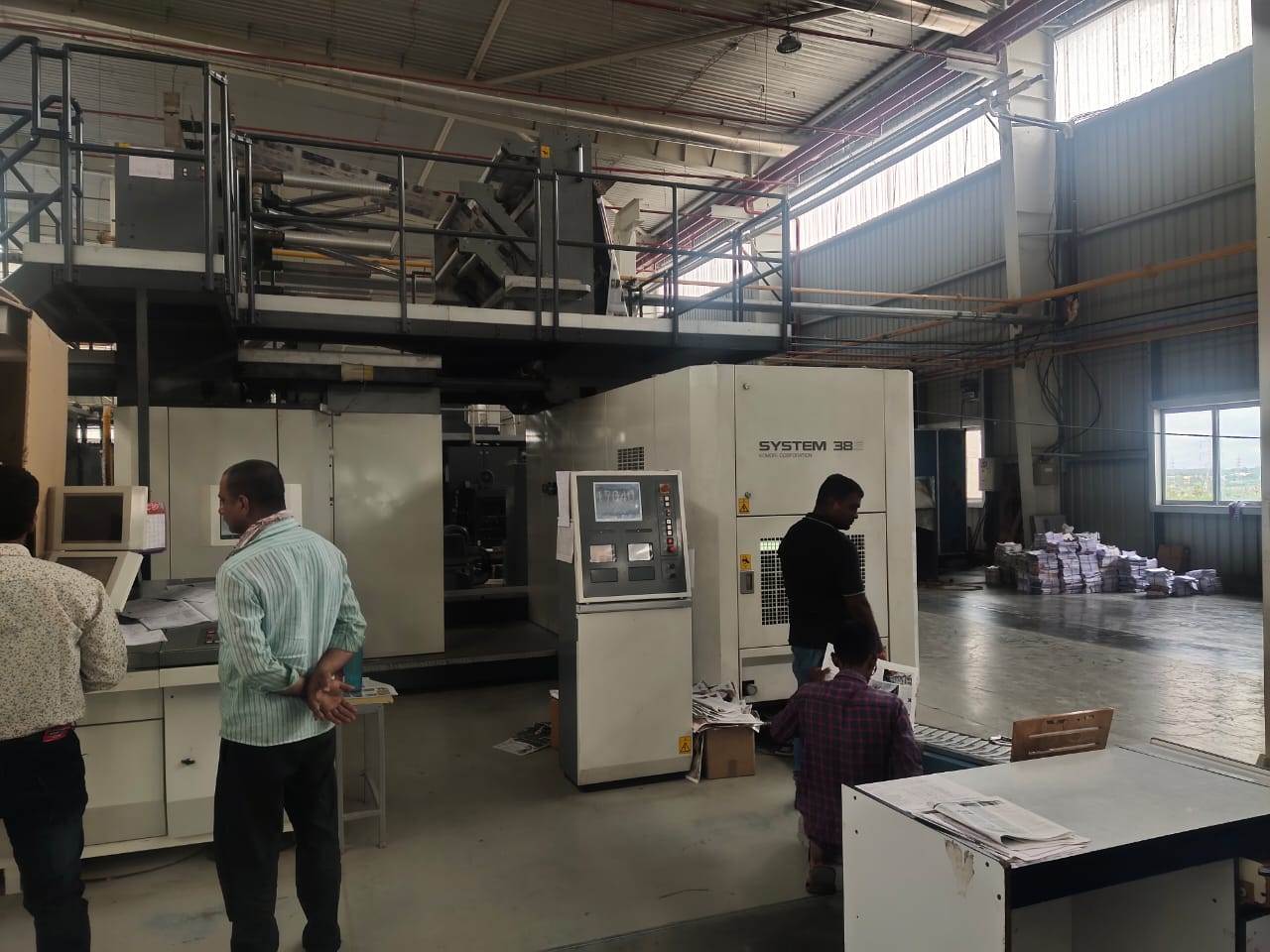Ramnath Alapati: No more old school - The Noel D'Cunha Sunday Column
Hyderabad’s commercial and packaging specialist, Kala Jyothi (KJPL), has strengthened its relationship with PrintWeek Awards, which began with the first PrintWeek Awards edition in 2009. Kala Jyothi will print promotional material for the Awards. This includes the special edition of the Book of the Night, which features the details of the finalists (winners of the Award and commended).
In this Sunday Column, Ramnath Alapati of Kala Jyothi shares his company’s vision and mission and his insight into the print industry
25 Sep 2022 | By Noel D'Cunha
Kala Jyothi was established in 1946, and at present, operates from three locations – head office and commercial printing division at RTC Cross Roads, Hyderabad, Telangana state; publishing and packaging at Raviryala, RR District, Telangana, and newspaper and bookwork at Guntur, Andhra Pradesh.
Ramnath Alapati of Kala Jyothi shares his company’s vision and mission and his insight into the print industry
We have four dedicated business verticals – commercial printing; publishing and bookwork; pharma packaging; and mono carton and rigid box packaging.
Kala Jyothi’s strength is our infra and machinery dedicated for each business vertical with all necessary operations being done in-house under one roof to ensure quality control, faster turnaround time and thus cost-effective. Hyderabad is centrally located, and there is a huge logistical advantage for all India shipping.
Since Kala Jyothi is the official print partner of the PrintWeek Awards, we will not participate in the Awards. But let me share with your readers about an innovation that created a WOW factor in the market. It was a real estate presentation kit for the Excellencia project, showcasing a collapsible 3D model of a luxury residential project along with a brochure with creative innovations. The job won the NAEP award in the brochure category. It was also listed in the Limca book of Records.
The recent quarter results for the paper, print, publishing firms are encouraging. The point is, even if the outlook for a few quarters is positive, there is still a gap in raw material prices and net revenue yield versus optimum sustainable levels. Requiring more stability, this space needs to be closely watched.

Soaring and random price fluctuations are definitely affecting the return-on-investments (ROIs), even if the order book is healthy. Our management team is closely focussing on reducing raw material wastages, effective control over processes to make workflow time efficient, focus on all possibilities of automation and continuous check to maintain lean manpower.
Print is not growing anymore, but it’s still a billion-dollar business. The BMPA-IPP magazine print data about Maharashtra alone says its Rs 90000 cr turnover. Having said that commercial print and publishing cannot be sustainable alone. Futuristic companies must look at providing conventional printing + digital print-on-demand (POD) + providing services for digital platforms. Packing and labels are already entering the pro-digital, niche and innovative POD space.
POD will be very big.
From now on, digital-focussed equipment for shorter runs providing quality, bare minimum wastages, lesser raw material and finished goods inventories, as well as quick turnaround, will be the equipment of choice.
I feel, innovation labs are imperative, especially in packaging, because it is highly consumer-centric, and the need for innovation and sustainability is high. However, it is challenging for smaller manufacturers to have an R&D environment due to its return on investment. R&D is also a mindset. If one can take small steps in this area, it is definitely rewarding in the long term.
Automation is the key. Be it: the workflow – from plate to print and automation of data and robotics. Both are equally important, and at KJPL, we have a two-pronged strategy for automation. At the manufacturing level, where we constantly invest in automation to increase efficiency and quality while steeply reducing manmade errors, and at an operational data level, where all processes and operations in the workflow are managed via tools, say, an ERP.
Management team members and key stakeholders have a 360-degree overview of the business right from estimation to invoicing and everything in between, allowing them access to data for better business planning, tighter control and future growth.

Though two different things, manufacturing operations and management go hand in hand, and in the modern world, both are interdependent. The benefits of technology are there, but the production process and management is still an Art which can be made efficient and transparent by using technology. Millennials must focus and give equal emphasis on both.
Today, sustainability is extremely important but comes at a cost for the customer, manufacturer and end-consumer. We continue to convince our clients about a selection of sustainable raw materials to be used for their products and reduce their carbon footprint. Whereas we are also well on the way to adapting greener manufacturing workflows.
The message from KJPL is, We don’t believe print is declining. Albeit, we experience that printed products are ever becoming luxurious and an expensive commodity. Customers are ready to pay for a beautifully well-produced design and an overall feel of a physical printed product. We still score high over digital.
That's why we have been silently supporting PrintWeek Awards and the Book of the Night for the past twelve editions. With more than 116 print and packaging firms (and more than 1,200 samples) plus an elite panel of 25 jury members, it celebrates all that is brilliant and unique in India.












 See All
See All